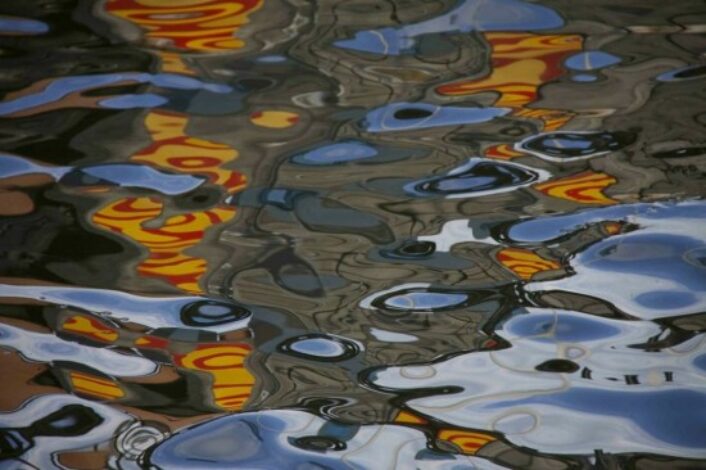Fine Art
Julie Mehretu
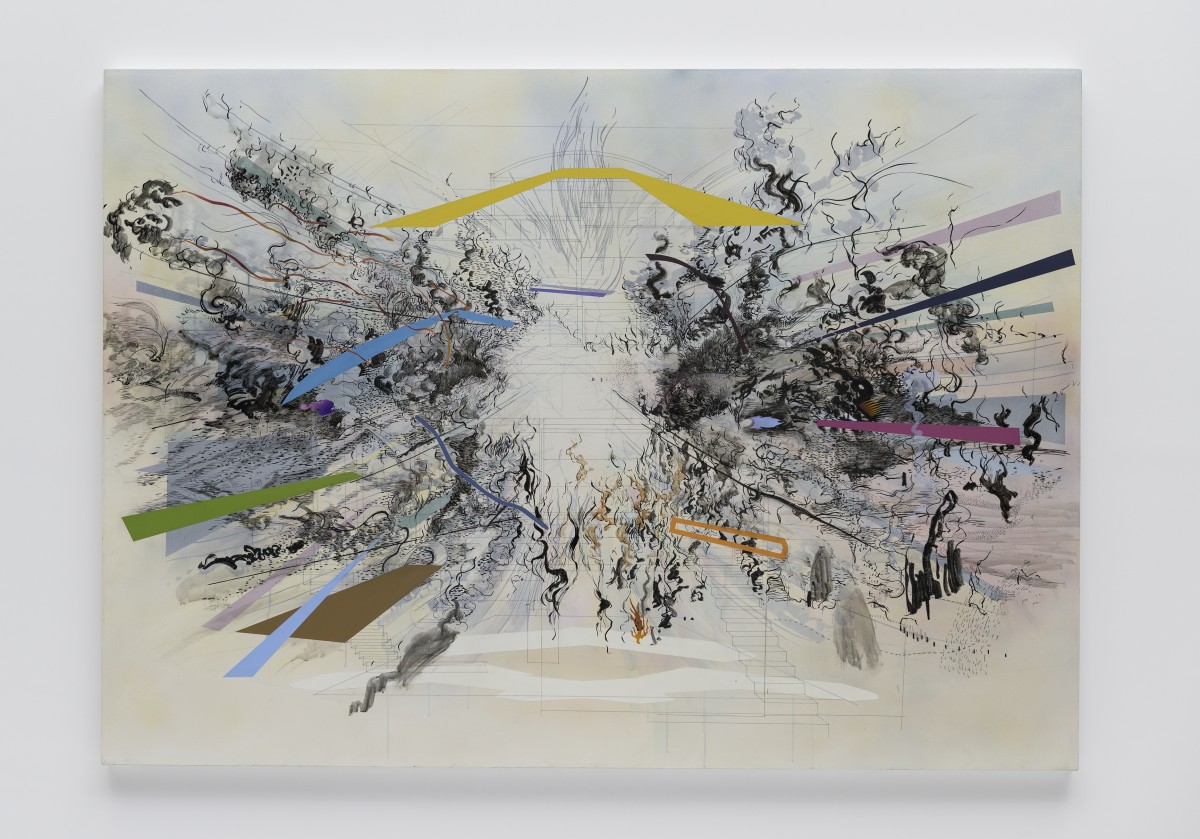
One of Mehretu’s canvases…
Image courtesy of: White Cube
Julie Mehretu is an American contemporary visual artist best known for her multi-layered paintings of abstracted landscapes on a large scale. Born in Addis Ababa, Ethiopia, Mehretu is the oldest child of an Ethiopian geography professor and an American Montessori teacher. In order to escape the political turmoil that was present in the country, the family fled Ethiopia when Mehretu was three years old .
Luckily, Mehretu’s father received a job offer from Michigan State University to teach economic geography and the family settled in East Lansing. Following college, she attended the Rhode Island School of Design where she earned a Master of Fine Arts degree in 1997. The artist’s background has been and continues to be influential on her work today.
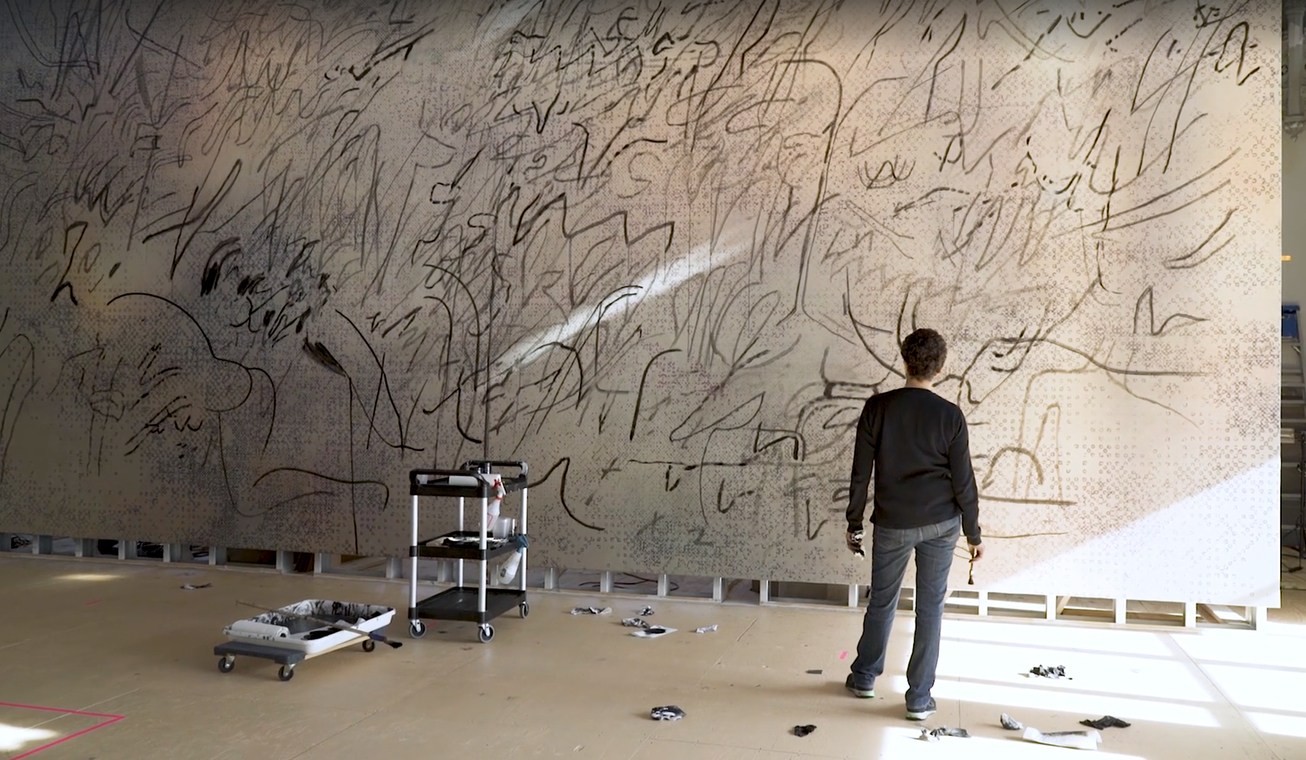
Mehretu in front of one of her canvases.
Image courtesy of: Culture Type
Mehretu makes large-scale paintings through layers of acrylic paint on canvas and overlaid with mark-making using pencils, ink, and thick streams of paint. Her work portrays a compression of time, space and place. There is clear evidence towards historical art references such as the dynamism of the Italian Futurists and Malevich’s geometric abstraction; and there are strong references to Abstract Expressionist color-field painting.
The canvases look extremely “worked over”… abstract three-dimensional landscapes that might represent the current socio-political climate. Mehretu is masterful at creating a new narrative using her own images of places and histories, in addition to wars and geographies. One might guess that her early childhood plus her father’s profession has a lot to do with what she creates… almost as an autobiography.
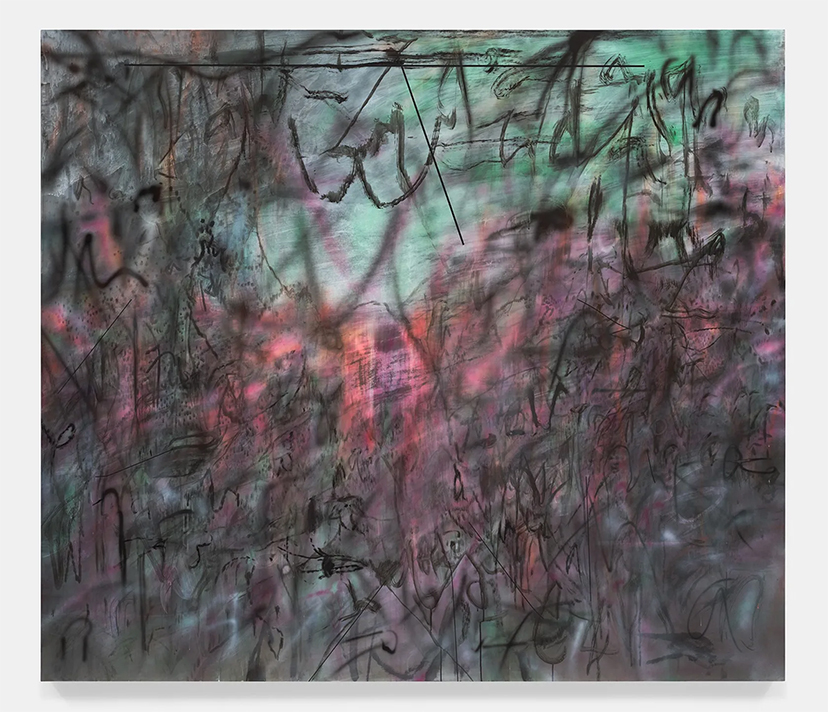
“Conjured Parts (eye)”, Ferguson, 2016
Image courtesy of: Marian Goodman Gallery
2019 was an evolutionary year for Mehretu. The Los Angeles County Museum of Art presented a retrospective, then the show moved to the Whitney Museum of American Art following its stint in California. The retrospective was successful at showing how the artist continues to push her “abstract language” in new directions. She says (courtesy of Galerie Magazine), “When something starts to feel like it loses its potency, I don’t want to keep working with that.”
Mehretu’s paintings feature buildings and streets… sometimes entire cities that crash into one another. The urban details are numerous and overwhelm senses. Flashes of different colored shapes and lines intersect with black squiggles… all symbolizing fragments of current life.
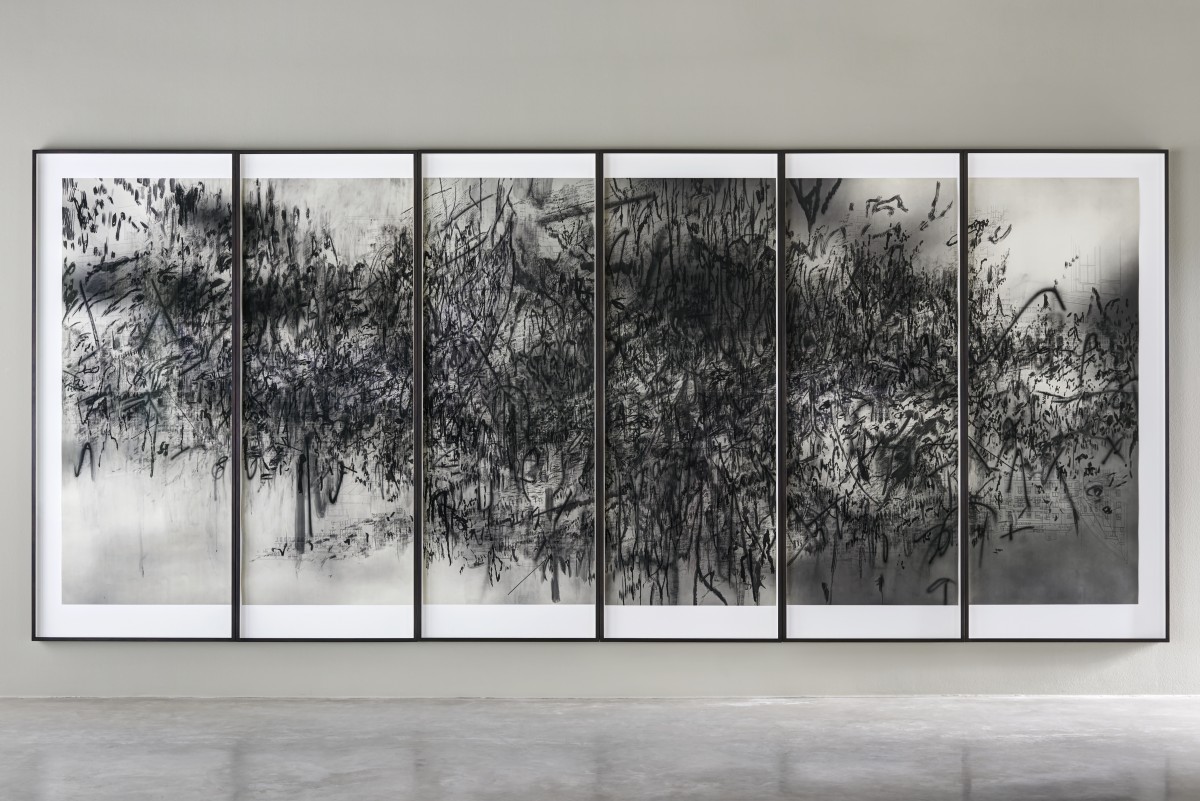
“Epigraph, Damascus,” 2016
Image courtesy of: White Cube
At the 2019 Venice Biennale, Mehretu’s exhibition, “May You Live in Interesting Times” referenced maps, architectural diagrams, and grids… all things vital to architectural systems. She rendered her paintings in a way 100% unique to her. The art is full of qualities of memory, history, global mobilities, inequalities, and a sense of play.
For these paintings, the “points of departure” are architecture and city… mainly the densely populated urban environments of today’s world. Specifically, these canvases showcase features such as facades and columns alongside building plans, city maps, or architectural renderings.
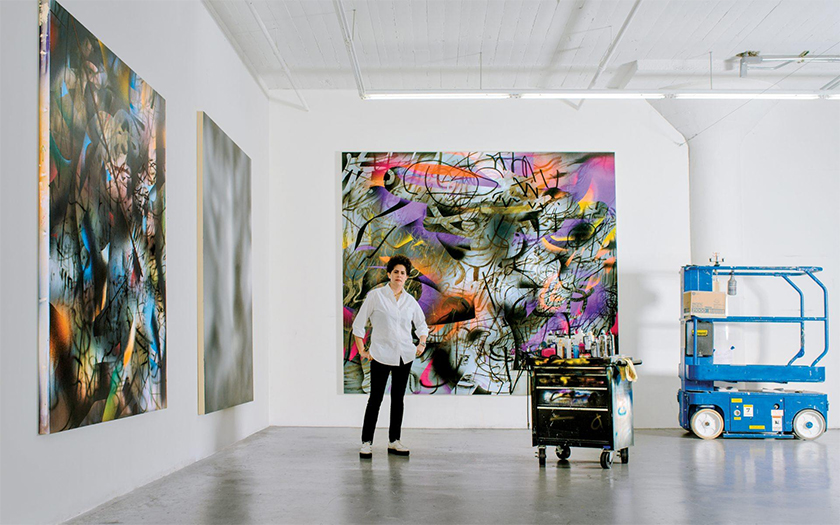
Mehretu in her Chelsea studio with paintings in different states of completion.
Image courtesy of: Galerie Magazine, photograph courtesy of: Heather Sten
Within Mehretu’s studio is the key to the fascinating stories behind her paintings. Recently in her studio, there was a large painting with only an initial layer of painting… an eerily blurred image of deep blue and black forms against a background of orange variants. The painting is derived from an image of the intentionally set fires in Myanmar in order to drive the Rohingya Muslims from their homes. Coincidently, these images are reminiscent of the devastating wildfires in both California and Australia.
Mehretu said that she has been contemplating this for a while and she wanted to step away after painting her first layer. She says, “I’ve shied away from getting drawn into this one. I have spent a lot of time just looking at it. I really don’t know what it’s going to look like, but all of that time definitely informs my intuitive ways of working. It’ll happen when I get there. The process gets really dirty at times, really messy. You can always erase, you can always sand out, and you can always build up. And it’s trusting that process.”
